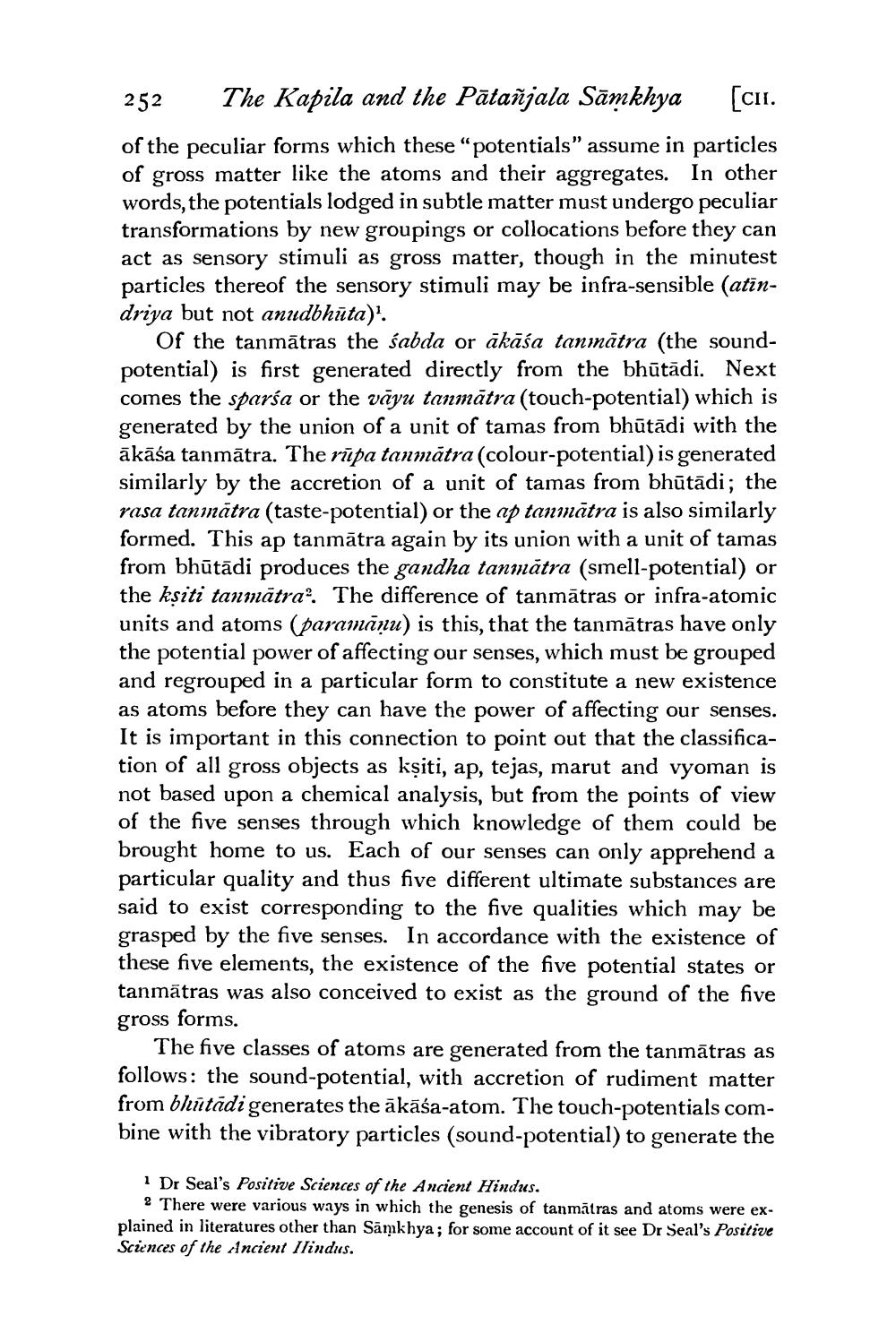________________
252 The Kapila and the Pātañjala Sāmkhya [cit. of the peculiar forms which these “potentials” assume in particles of gross matter like the atoms and their aggregates. In other words, the potentials lodged in subtle matter must undergo peculiar transformations by new groupings or collocations before they can act as sensory stimuli as gross matter, though in the minutest particles thereof the sensory stimuli may be infra-sensible (atīndriya but not anudbhūta)'.
Of the tanmātras the sabda or ākāśa tanmātra (the soundpotential) is first generated directly from the bhūtādi. Next comes the sparśa or the vāyu tanmātra (touch-potential) which is generated by the union of a unit of tamas from bhūtādi with the ākāśa tanmātra. The rūpa tanmätra (colour-potential) is generated similarly by the accretion of a unit of tamas from bhūtādi; the rasa tanmātra (taste-potential) or the ap tanıātra is also similarly formed. This ap tanmātra again by its union with a unit of tamas from bhūtādi produces the gandha tanmātra (smell-potential) or the kşiti tanmātra. The difference of tanmātras or infra-atomic units and atoms (paramāņu) is this, that the tanmātras have only the potential power of affecting our senses, which must be grouped and regrouped in a particular form to constitute a new existence as atoms before they can have the power of affecting our senses. It is important in this connection to point out that the classification of all gross objects as kșiti, ap, tejas, marut and vyoman is not based upon a chemical analysis, but from the points of view of the five senses through which knowledge of them could be brought home to us. Each of our senses can only apprehend a particular quality and thus five different ultimate substances are said to exist corresponding to the five qualities which may be grasped by the five senses. In accordance with the existence of these five elements, the existence of the five potential states or tanmätras was also conceived to exist as the ground of the five gross forms.
The five classes of atoms are generated from the tanmātras as follows: the sound-potential, with accretion of rudiment matter from bhūtādi generates the ākāśa-atom. The touch-potentials combine with the vibratory particles (sound-potential) to generate the
1 Dr Seal's Positive Sciences of the Ancient Hindus.
2 There were various ways in which the genesis of tanmatras and atoms were explained in literatures other than Samkhya; for some account of it see Dr Seal's Positive Sciences of the Ancient llindus.




